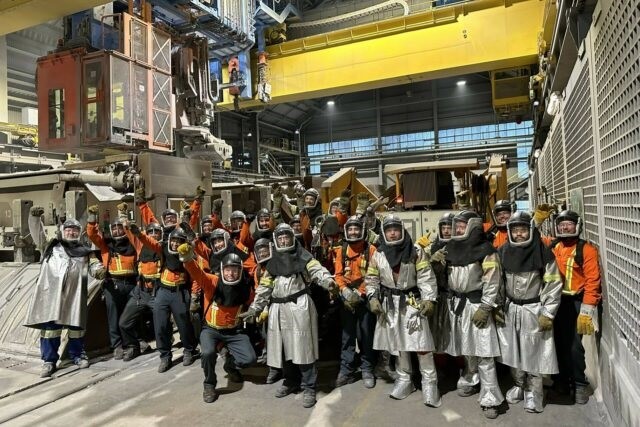

Rio Tinto's Kitimat aluminium smelter is finally back in full production after a 17-month restart following a lengthy interruption caused by a strike in 2021. Rio Tinto general manager Simon Pascoe stated that the accomplishment is noteworthy for the community and his 1,100-member crew. The smelter has achieved its maximum production capacity of 432,000 tonnes of aluminium per year, marking the first instance of such achievement since 2018. Rio Tinto also plans to celebrate the smelter's 70th anniversary next year.
"We've not just put ourselves back on where we left before the strike. We're actually operating at our plant's full nameplate capacity. It's a testament to the dedication and hard work of every individual on the team," stated Simon Pascoe.
{alcircleadd}
Pascoe assumed the position previously held by Affonso Bizon in November of the preceding year, following the end of a two-month strike in 2021 that significantly reduced operations to a mere 25 per cent. The decision to implement the downgrade was deemed necessary due to safety concerns. However, the subsequent process of restoring the system to its full capability was characterised by many intricate factors.
"Two things are happening. We've got the incline up because we're adding parts every week. So the intensity is increasing, but also the speed of how we have to operate increases. Where we're at now is we've been able to hold the speed of the treadmill and we've been able to now reduce the incline because we're now at full operation," said Rio Tinto general manager Simon Pascoe.
Restarting the smelter necessitates not only the removal of hardened molten metal from the bottom of the pots but also the accurate restarting and rebuilding of those pots. It necessitates a great deal of time, personnel, and big machinery. He believes the feat is all the more amazing given the changes in the workforce over the years. With retirements and other departures, BC Works has hired 400 new employees from Kitimat and Terrace and inter-provincial and foreign expertise for critical tasks throughout the ramp-up period.
According to a Rio Tinto estimate, the smelter contributed $532 million to the British Columbia economy in 2022, with $254 million going to employees and $289 million to BC suppliers and services. Around $2.2 million was given to various local causes as part of the community contributions. When asked about the financial cost of the strike, Pascoe refused to provide a figure, instead emphasising its negative impact on all parties.
With the incorporation of green energy sourced from the Kemano power plant and an investment of over $5 billion towards technological advancements, the smelter is actively striving to establish itself as a frontrunner in manufacturing environmentally friendly aluminium. This strategic approach addresses the increasing global demand for green aluminium within a progressively competitive market.
“A strike is not good for anybody — not good for the employees, not good for the community, not good for business. We’re working very closely with our union, Unifor [Local 2301], and we have a very good relationship with the executive. I can pick up my cell phone on the weekend, after hours, and they can do the same for me. And I think that’s refreshing that they are feeling the commitment of Rio Tinto to bring it back, but equally the commitment to build that relationship. We’ve got a lot of good stuff ahead.We’re going to ramp up into stabilization, and stabilizing the processes, the systems, the training, and then into 2024 we will be moving into the optimization to make sure we will set that sustainable future for us to be globally competitive," added Simon Pascoe.



Responses






